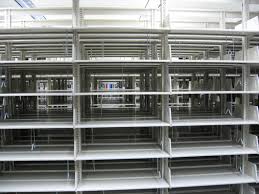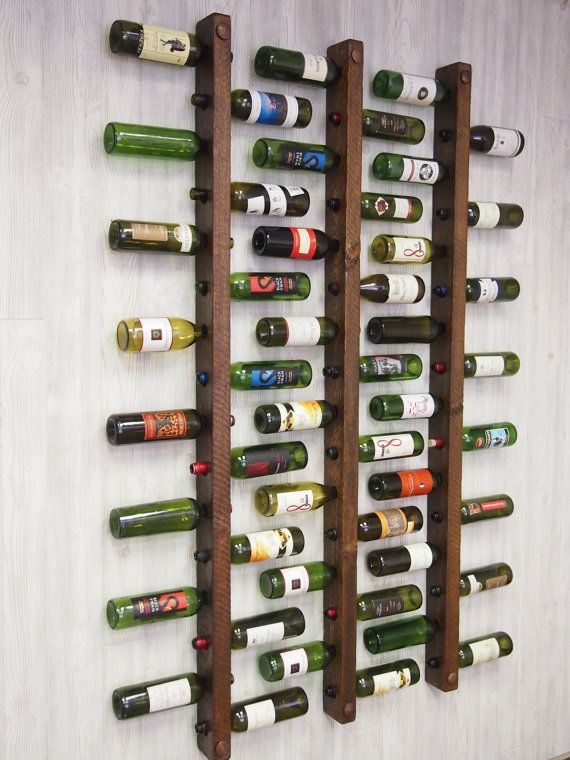So, you want your own website? You may probably have talked to a few people who are hosting their own website or to a few experts in the field. They might have bombarded you with phrases like, “First, get your own domain”, “You can opt for ‘self-hosted’ or ‘white-labelled'”, “Dude, don’t go for WordPress, Drupal is light years ahead!”, “Do you want a ‘static’ website or ‘dynamic'”?
Before you know it, before you have even started to take any action to build your website, you are trapped in the paralysis of making sense of jargon. Fear no more. In this post, I will try to speak human language and explain the terms that are necessary for building your own website, so that you can approach vendors, armed with a little more know-how.
A world with racks

Let us imagine a large room with a large number of aisles and shelves of racks, owned by a company named ‘Rent-a-Rack Pvt Ltd’. There are 26 rows of shelves A-Z. Each row contains 100 racks. So we have racks from A001 to Z100. These are the rack code numbers that the company uses to identify each rack.
To use a rack, you need to pay a monthly rental for it. Failure to pay automatically makes the company eligible to throw out your stuff and make the rack empty for someone else. Why rent a rack from a company when you can build your own shelf? If your only goal is use a few racks for storage, you wouldn’t want to invest in wood/steel and a carpenter to make your own. The infrastructure is already set up and offered to you for rent.
To procure a rack, you apply with the company. They find a free rack and give you the code for that rack. Let us assume you are given rack R072. Henceforth, you are free to use R072 as you see fit. Keep your bag, keep your books, leave it empty. The space is yours to use. In the website world, this is the equivalent of a hosting space or a virtual private server. These are just geeky terms for server machines where you will put your website. Similar to getting racks on rent, you get machines from ‘hosting companies’ on rent.
People are allowed to walk towards your rack and see what you have inside. Depending on the access you have given, they may even touch, hear or smell things inside your rack. This is like people visiting your website, becoming members and getting more out of your website.
Note that the rack you are given has a code — R072. Similarly, in the website world, the server machine given to you to put your website contents also has a geeky looking number. It is called the IP address. As the owner of your rack, you are recommended to remember the rack code R072 at all times. Likewise, it is recommended that you keep your website’s IP address in a place from where you can recollect it.
The caveats
Remembering geeky code is hard. If you were to forget it, you’d never be able to get to your property. Forgetting your rack number cuts you off from your rack. Forgetting your IP address cuts you off from your website. Sure, you can write them down somewhere so that you don’t lose your property. However, giving out a geeky code to someone who likes your content is not good brand building. Would you like a slogan such as, “Behold, rack R072!” or something funkier such as “Behold, Joe’s den!”. The second one is definitely more memorable and brand-worthy.
For the purposes of branding and memory-friendliness, it is recommended that you name your rack something cool and let someone else remember the cryptic codes for you. You walk upto them with your rack’s cool name and they tell you the code. Neat, right?
Let’s name your rack
Rent-a-Rack’s racks are becoming popular and everyone in town is talking about it. Almost everyone owns a rack there and is putting his/her cool contents for personal use and for showcasing to others. But almost everyone is complaining about having to use cryptic codes to identify his/her rack. Everyone wants to name his/her rack something cool. Joe wants it to be “Joe’s den”. Salma wants it to be “Jannat-e-Salma”. Vishnu wants it be “Vaikunth” and so on.
People start calling their racks by names. However, pretty soon, they are stepping on each other’s toes. Joe Smith calls his rack, “Joe’s den”, but so does Joe Harding. Shiva calls his rack “Kailash”, but so does Kedar. Too much friction. What to do?
The naming company
In comes this company named “BrandSure Pvt Ltd”. Their sole purpose of existence is to approve the cool names that people give their racks. But with one more very important responsibility. They make sure that names are unique and that one name belongs only to one person. A person needs to pay a yearly fee to keep a name to him/herself. If a name is already taken, another application for the same name is rejected.
When a person applies for a name, he/she is told to submit one proof of unique identity. It can be the social security number, Aadhar, passport, PAN card and so on. This locks in the rights for a name to a single person in the world. Any other person unofficially duplicating this name can be sued. Names are legally protected and people are now breathing easy.
When people no longer use their racks and surrender them to Rent-a-Rack, they are recommended to sell off their cool names so that other people can use those names. People can sell those names to others, but the transaction has to be in front of the eyes of officials at BrandSure and approved by them. Direct person-to-person sales are illegal and BrandSure will not authorise the transfer. Also, if a person has not paid up the yearly fee, BrandSure can reclaim the name immediately and approve it for someone else.
In the Internet world, a domain name registrar takes the responsibility for approving your domain name and avoiding clashes. All domain names are affiliated with a unique email ID. All confirmation codes, OTPs and communication are sent to that email ID. That is how the registrar can identify the owner and authorise operations such as confirmation of purchase, transfer of ownership, etc.
Now what?
You got your rack R072 for at least the next month and a cool name “Tech 101” for at least the next year. What is your next step? You need to make sure that when someone uses the name “Tech 101”, somehow he/she is led to rack R072 to see the contents of your rack.
The rack register
BrandSure has sought the help of another company named Map My Rack to set up a register that maps the names that people give to their racks to the rack codes. The work is very detailed and the margin for error is little. If names and rack codes are mixed up, it will lead to angry rack owners. So Map My Rack sets up a fee for this service. BrandSure can experiment with two payment models. They can pool the fees of their own service and Map My Rack’s service together and charge one lump sum from rack owners. Otherwise, they can direct rack owners to Map My Rack and ask them to pay directly.
Rack owners want to record their entries with Map My Rack. An entry maps a rack’s name with its rack code. There is no limit on how many times rack owners can change the mapping, so long as the record is paid for on an annual basis. The record can even point to ‘no racks’ or ‘parked’. This is in case a person wants to hold onto his/her rack name but owns no rack right now.
In the Internet world, the mapping from domain name to IP address, i.e. a mapping from a name such as www.joesmith.com to the actual machine containing the website, is done by a DNS service. Whenever you switch the machine on which your website is hosted, you should immediately direct your DNS service provider to point the records to the new machine’s IP address.
Now that we have discovered the services that are required for you to own your rack, put your contents in it and brand it, let’s go back to the racks themselves and see how Rent-a-Rack can offer different types of racks and how you can pick one that suits your purpose.
An empty rack or a special-purpose rack?
Rent-a-Rack are famous. But they are not cocky. They have been listening to customer feedback and watching their activity.
Matsya sells exotic fish. She needed a refrigerated rack so that she can keep her fish from rotting. She had to search high & low for a refrigeration expert to retrofit her rack with sealed cooling. Invierno stocks sweaters in his rack. He needed a way to keep them from being infested by moths. He had to hire a pest control expert to prepare his shelf to be pest-free. Holz needed an assortment of hooks, notches and drawers to store his variety of woodwork tools. He built all the extensions himself and added them to his rack, but it took him a lot of time.

Rent-a-Rack started noticing patterns and came out with differentiated services. Along with basic empty racks, they came up with refrigerated racks, pest-controlled racks, racks with hangers, book-shelf racks, racks for golf clubs, etc. The pricing for these racks varied based on Rent-a-Rack’ investment and customer demand. Some types of racks were an instant hit with customers, while some needed improvements. Some did not meet customer expectations and Rent-a-Rack quietly pulled the plug on them.
Specialised services in the Internet world
In the Internet world, hosting companies excel at differentiating and specialising their services. For the technical experts they offer machines with only the operating system installed. The experts can then decide what software to install in those machines, accordingly converting that machine into a web server or an email server or even an online gaming server. However, for most business owners with lesser technical skills, it makes sense to use more ‘ready’ services (where everything is installed) or services which present a ‘drag-and-drop’ approach to making websites.
There are advantages and disadvantages of each. The do-yourself-from-scratch approach gives you so much flexibility that every pixel of your website is under your control. You can add advanced functionality such as setting up your own video call service. But, you need to write code for everything and install every piece of software yourself. If that is not your cup of tea, you’ll need to invest plenty on expert developers. On the other hand, a drag-and-drop service can be used by anyone, but such services confine you to use their layout templates and functionality. This is not because the company wants to restrict you, but because it is impossible to make an exhaustive list of drag-and-drop pieces for everything that is possible on the Internet. To make a drag-and-drop for every feature takes time for the vendor and some of these features may be used by very few clients. Sometimes, drag-and-drop services can be so limited that it becomes an ordeal to even add an extra log or an extra menu to your website.
Deciding between drag-and-drop and do-from-scratch
It helps to break your project down into multiple deliverables. Some features like web pages, dated blogs with archives, email subscription and menubars are absolutely essential from day 1. You can quickly set them up with a drag-and-drop services and roll out. Likewise, you can set up basic e-Commerce with a drag-and-drop ready service like PayPal. Same goes for a money-generating service like Google AdSense.
As your website becomes more popular and as you generate more income, you can invest in features that need to be specifically programmed. You can invest in courses to teach yourself web programming or you can invest in expert developers.
Programming expertise is the only way forward if you are setting up your own video conferencing website or a server on which you are hosting your own online games. It may also be necessary if you set up an e-Commerce website which accepts crypto-currency like Bitcoin, since none of the readymade e-Commerce solutions is ready to do this yet.
Summary
To set up a website, you need to start with 3 things.
- A domain name from a domain name registrar.
- A machine (also called hosting space) to put your website in.
- A record with a DNS provider which maps your domain name to your machine. The domain name registrar often doubles up as the DNS provider. So you buy the domain name and the record from the same company.
The vendor who provides the machine for your website will often make things simpler for you by offering services that make it easier to get started. These consist of
- All the software needed to show your web pages on browsers.
- Software needed for add-on services like database and email.
- If you are setting up an e-Commerce website, then the set of programs that help you list products, show the user a ‘Buy’ button and to transfer the money from your customer’s bank account / credit card to your bank account.
- Look-and-feel themes that you can choose from for decorating your website and giving it a professional look.
Alternatively, you can simply buy a machine with your favourite operating system installed. The vendor will give you access to install your own software and you can build your server exactly as you like from scratch.
Conclusion
In this blog, you have seen just enough to know the elementary things that you must know to start building your website. In the next post, we will look at some example solutions offered by various vendors.

This is the simplest explanation I have ever heard off for setting up a website. Finally i understand what all I pay for 😛
Thats nice 🙂 Tech 101 exists for the very reason that non-techies understand tech better.